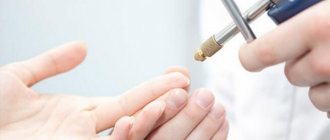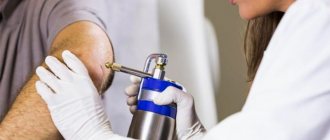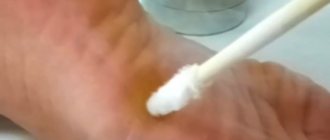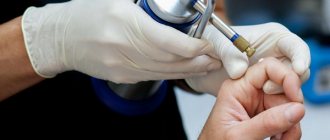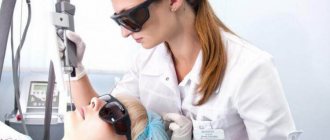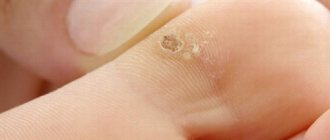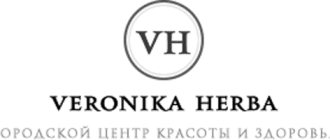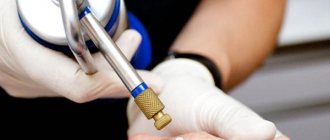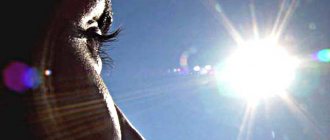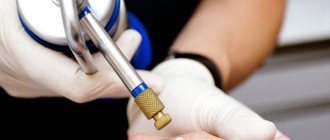Spines are one of the varieties of warts that usually appear on the soles or palms of the hands. This is a very painful formation , causing acute pain under mechanical stress (for example, when walking).
Our client’s sincere gratitude is not empty words. Our doctors successfully saved little Dasha from unpleasant formations.
Externally, the spine has the appearance of a compacted whitish papilla, rising above the surface of the skin ( at the beginning of the disease ).
Subsequently - a formation that increases in width and depth over time (from 1 month to 2-3 years), with an uneven, bumpy surface, black dots inside.
When pressed , painful sensations occur, periodically itching.
When opened independently, they bleed heavily.
Plantar wart removal price
The cost of removing plantar warts in Moscow can vary and reach several thousand rubles.
Before removing the spine, you need to clarify the cost of the manipulation. Many clinics indicate a low cost in their price list. Most often, this means that the true price is veiled and at the appointment it turns out that you need to pay extra for anesthesia, bandaging, etc.
In our clinic, the price list indicates the full price of the intervention, i.e. no additional payments will be required.
Features, symptoms of plantar warts
The spine is a compaction on the plantar surface of the foot with a diameter of 2 to 10 mm (sometimes more). The formation resembles a small callus, which can be either flush with the skin or slightly raised above it. The presence of microscopic dark spots on the surface (thrombosed capillaries) is considered characteristic. Color – from white-yellow to brown. The wart is dense to the touch, pressing on it causes pain.
The spine differs from ordinary warts and papillomas in its higher density, as well as pain when pressed. This is due to the fact that, due to their location, they are always subject to pressure and stress, which causes them to become keratinized; in appearance they sometimes resemble small calluses. The same factor causes pain - when pressed, a dense wart presses on deeper tissues, causing pain (a comparison with a pebble in a shoe is appropriate here).
Removal of plantar warts should be carried out by a specialist. Attempts at self-removal, as well as treatment with folk remedies, are usually ineffective, because the spines are highly dense and have deep “roots.” Superficial removal (cutting with forceps after steaming, applying celandine, aloe, etc.) usually leads to relapse.
Stages of cryodestruction
The freezing procedure is carried out by a specialist using an applicator (a long wooden stick with a cotton tip or a special cryo-applicator with a reservoir for the active substance). A small amount of nitrogen is applied to the growth for thirty seconds.
Immediately after cauterization with nitrogen, the growth turns white and becomes hard. An hour and a half after the manipulation, the damaged area turns red and swelling may appear. Tomorrow a bubble forms, which gradually dissolves over seven to ten days. The wound formed as a result of freezing is covered with a crust of dried blood and lymph.
For ten to fifteen days, the crust will act as a natural bactericidal dressing, after which it will disappear on its own. Do not scratch or peel off the crust. This can lead to scarring and secondary infection in the wound.
The skin after removal of spines takes much longer to heal than after removal of other tumors. A person may be unable to work for two weeks. This is associated with pain at the site of the removed growth. In addition, plantar growths usually have deep roots, the removal of which may require three to four cryodestruction procedures.
The experience and professionalism of the specialist performing the procedure allows him to assess the strength of the impact. Otherwise, damaged skin will take a very long time to heal, and a dent may remain at the site of the removed tumor.
Reasons for appearance
As mentioned above, the main cause of warts is the human papillomavirus (HPV). The presence of HPV in the body is quite common. But the mere fact of the presence of a virus does not necessarily mean the appearance of papillomas.
Predisposing factors are:
- Poor foot hygiene
- Sweaty feet
- Skin trauma - abrasions, microcracks
- High virus activity
- Certain types of virus
- Decreased antiviral immunity
- Some common diseases that reduce the trophism (nutrition) of the skin of the foot are diabetes mellitus, polyneuropathy, arterial atherosclerosis
There are many types of human papillomavirus. Some of its varieties can cause the development of malignant tumors. The virus that causes plantar warts is not one of them. Spines never become malignant, but can cause other inconveniences - pain, cosmetic defects.
Carrying out the procedure during pregnancy and childhood
Removing warts with nitrogen during pregnancy is not recommended, since any intervention in a woman’s body can further weaken the immune system and become a threat to the normal course of pregnancy.
However, if the formation quickly increases in size, then the procedure is performed.
In such cases, it is recommended to postpone the removal of warts with nitrogen until the second trimester.
Since in the first and third trimester, the woman and child are most susceptible to external stimuli. Nitrogen removal in childhood is used from 6-7 years .
However, if necessary, this procedure can be performed at an earlier age.
It is necessary to select a special approach for each child and build on the individual characteristics of the body.
Unlike adults, it is much more difficult for a child to tolerate this method of skin treatment.
Special drugs are used for pain relief and removal is carried out in several sessions.
Removal of plantar warts
Peculiarities
When removing spines, you need to consider the following features:
1. Location on the sole increases the wound healing time (due to constant mechanical impact, sweating, etc.).
2. They are always removed deeply, forming a “crater”. Superficial removal is fraught with the risk of leaving the “roots” of the wart and recurrence.
3. “Home treatment” with folk remedies is undesirable, because with it, it is not possible to achieve the optimal depth of exposure, or, on the contrary, extensive chemical burns occur with various substances used for these purposes.
Reviews
Of course, there are as many opinions as there are people. And reviews of cryodestruction, as of any manipulation, depend on the pain threshold, the patient’s history of diseases, a tendency to allergic reactions, and even mood.
Most patients who choose cryodestruction as a method of getting rid of spines note:
- Pain and discomfort during the procedure and for two to three days after it;
- High effectiveness of treatment with liquid nitrogen;
- Repeated manipulation in most cases may be necessary to remove deep, old growths;
- The formation of a bubble and the need to treat it are the main disadvantages of the procedure;
- Affordable price;
- No scars or scars.
The key to successful treatment is the choice of clinic and specialist. The procedure itself, the healing process, the duration of epithelial restoration, and the appearance of healed skin depend on the doctor’s qualifications.
Methods
There are several methods for removing spines. They all boil down to the destruction of the wart, but this is achieved through various methods of influence, which can be divided into three groups:
- Destruction (destruction using laser, radio waves, electrocoagulation)
- Chemical destruction using various substances (liquid nitrogen, salicylic acid, alkalis, etc.)
- Surgical excision
Let's take a closer look at these methods
Destruction methods are the most effective, because they destroy the wart completely and with high precision. The radio wave method should be considered the most optimal. It involves the most gentle and at the same time deep removal of the spine. During laser removal, the depth of penetration may not be sufficient to destroy the “roots” of the wart, which can lead to recurrence. When removed with an electrocoagulator, excessive damage to surrounding tissue occurs, which leads to longer wound healing and the formation of a rougher scar.
Chemical destruction is not very effective in treating plantar warts, but is more suitable for removing small papillomas on other parts of the body (i.e. those small formations that rise above the surface of the skin). Plantar warts are located almost flush with the skin and spread quite deeply inward. Therefore, the effect of a chemical on them is either not enough to completely destroy the wart, or, on the contrary, it is too extensive and causes chemical burns of the surrounding tissues, sometimes with the formation of long-term non-healing ulcers.
Surgical excision is rarely used for two reasons: firstly, extensive excision involving healthy tissue is simply not necessary and unreasonably increases the volume and invasiveness of the intervention. Secondly, the plantar surface of the foot is subject to constant mechanical stress (plus sweat production, limited “ventilation” of the wound due to shoes). All this greatly increases the risk of suppuration under the sutures. Surgical removal is advisable in cases where the wart is suspicious of a malignant formation and a high-quality histological (under a microscope) examination of the removed material is required.
Is the procedure painful?
The degree of pain depends on the individual characteristics of the person, as well as on the size of the wart that will be treated with nitrogen. The sensation of touching nitrogen on the skin is similar to a cold metal object.
A person undergoing nitrogen cauterization may experience the following unpleasant sensations:
- Mild tingling sensation;
- Feeling of cold at the site of nitrogen exposure;
- Numbness of the area where the wart is located;
- A burning sensation at the site of nitrogen exposure most often occurs at the end of the procedure.
For children, it is recommended to use ointments with an analgesic effect; adults carry out such procedures only at their own discretion.
In some cases, discomfort may last for several days, depending on the size of the formation and the duration of exposure of the skin surface to nitrogen.
How does the removal itself take place?
At the appointment, the doctor clarifies complaints, the duration of the disease, conducts an examination, and clarifies the presence of concomitant diseases and allergies to medications.
If the diagnosis is confirmed and there are no contraindications, intervention is performed. After treating the skin with an antiseptic, local anesthesia is administered with a thin needle. This may cause some pain (like any injection), but then the removal itself is completely painless. After making sure that the anesthetic has worked, the doctor destroys the wart with a radio wave scalpel. After removal, the wound is treated with fucorcin and a bandage is applied. The entire intervention takes 2–3 minutes.
Possible complications and consequences of the procedure
After a procedure using nitrogen, small spots or scars may remain on the human body.
However, there may be cases when other symptoms occur after removal:
- The appearance of peeling of the skin at the site of exposure to nitrogen most often occurs if large volumes of skin have been exposed to the substance. May appear after removal of juvenile warts;
- The appearance of a pigment spot at the site of exposure to the substance. However, this type of consequence of the procedure most often disappears after some time on its own;
- Scarring occurs most often if the dosage of nitrogen was calculated incorrectly, resulting in a burn.
Complications of this removal method can manifest themselves as follows:
- Formation of a blister that contains a large amount of serous fluid;
- Inflammatory process on the skin as a result of too deep exposure to nitrogen;
- Injuries to tissues located near the enlarged stratum corneum.
If the procedure is carried out in specialized institutions, the risk of complications is quite rare and the effect of nitrogen on the skin is well tolerated.
Where can a plantar wart be removed in Moscow?
We can definitely say that spines need to be removed in a clinical setting; the intervention should be carried out by a qualified surgeon who has extensive experience in treating such pathology. In Moscow, this can be done by Dr. Igor Vitalievich Elshansky. He will remove the formation using the optimal radio wave method. The intervention is painless, performed under local anesthesia, and after the manipulation the patient can immediately go home. The clinic has all the conditions for qualified removal.
Don’t expect the wart to “go away” on its own, don’t try to remove it yourself, contact a professional!
Wound care during the healing period
The main care in the postoperative period is to take good care of the damaged area. The bubble that appears after cryodestruction must not be pierced, injured or wet.
A punctured blister or torn crust can become an “entry gate” for pathogens to enter the wound. The development of a secondary infection at the site of the removed tumor may be accompanied by an inflammatory process, redness of the skin around the wound, and purulent discharge. In this case, you cannot do without medical help.
